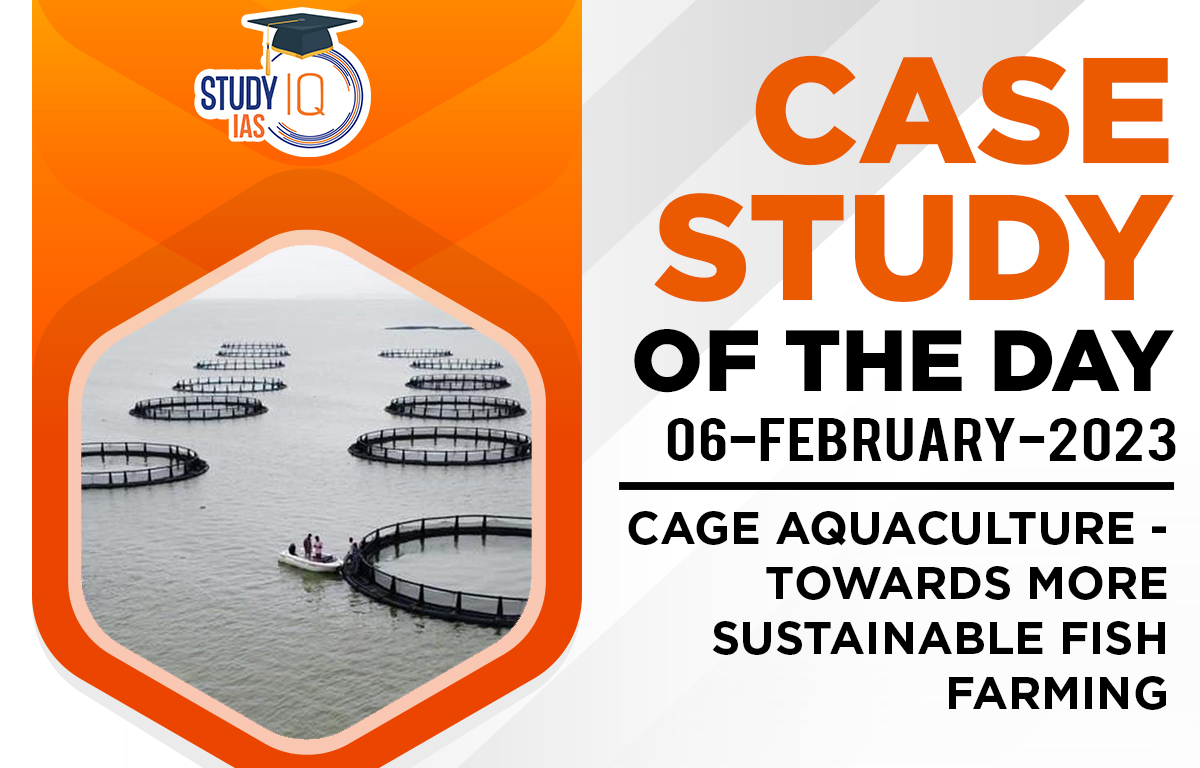Table of Contents
Background
- As part of a pilot project under Odisha state’s Reservoir Fishery Policy, 96 entrepreneurs from across Odisha have taken up cage fish farming under the state’s subsidised policy to augment freshwater fish production.

About Cage Aquaculture
- Odisha has one of the highest fish consumption populations in India, and it meets the consumption demand by importing freshwater fish.
- Hence, the gap between supply and demand is being bridged with the cage culture technique for fish production, with the pilot project initiated in the Hirakud reservoir located in the Sambalpur district.
- Thus, In 2020, under the state policy, cage culture zones were opened up in Hirakud and Indravati reservoir for leasing to the private sector through Expression of Interest, with the following objectives:
- To augment fish production from reservoirs in a responsible manner, without affecting the livelihood of the traditional/local fishing communities;
- To achieve self-sufficiency in the fish demand of the state.
- To increase per capita fish protein availability in the state;
- To enhance the income and livelihood security of the fishers depending on reservoirs.
- To promote entrepreneurship in aquaculture and to create job opportunities.
- To ensure that the growth of aquaculture is:
- Inclusive and sustainable
- In harmony with principles of ecological integrity and natural resource conservation
- Cage is an enclosed space to rear fish in water that maintains a free exchange of water with the surrounding water body. The cages are generally enclosed on all sides with net walls, except for leaving an opening at the top for feeding and handling the stock.
- The advantages of the Cage Culture technique, over the present pond-based aquaculture, are:
- Pond-based aquaculture requires huge capital investment without adequate returns.
- In a reservoir-based cage culture, the minimum production in terms of biomass is at least 20-30 times more.
- The quality of fish is better because of the flowing water, as compared to ponds where the water is stagnant.
- On the whole, Odisha’s new initiative is considered investor-friendly, environmentally sound, and socially equitable to be taken up by private entrepreneurs or companies in partnership with Primary Fishermen Cooperative Societies (PFCS) and SHGs.
- Challenges associated include:
- Huge investment, as the new technology continues to face challenges in terms of market linkage, sustainability, disease outbreak, poaching, and other input logistics.
- Cage culture for now relies on specific species which are not majorly found in local markets.
- For other inputs like feeds or seeds, the entrepreneurs depend on neighbouring states.
- Given the potential to meet demand and be economically feasible, there is a need for other states to implement similar models to create viable sustainable opportunities.


 List of Governor of States in India, Con...
List of Governor of States in India, Con...
 Daily Quiz 15 July 2025
Daily Quiz 15 July 2025
 Maratha Military Landscapes of India Add...
Maratha Military Landscapes of India Add...





















